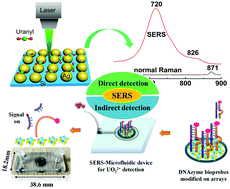Research progress of SERS on uranyl ions and uranyl compounds: a review
Abstract
There is an urgent demand for the rapid and sensitive analysis of uranyl ions and uranyl compounds in environmental monitoring and nuclear emergency fields. However, most of the current analytical techniques do not provide both the content of uranyl ions and the structural information of uranyl compounds in trace level. Comparatively, surface-enhanced Raman scattering (SERS) can achieve the single molecule detection and provide the structural information of molecules as well. Hence, SERS has become a suitable solution for the in situ analysis of trace uranyl species, especially when coupled with a portable Raman spectrometer. This review systematically introduces the SERS studies of uranyl ions and uranyl compounds in recent years, including the fabrication of silver and gold substrates with a high density of “hotspots” and excellent stability, the performances of different substrates in the quantitative detection of uranyl ions and structural analysis of uranyl compounds, and the explanations for the Raman enhancement mechanisms of uranyl ions. Additionally, the developments about the field assay of uranyl ions are also elaborated to further evaluate the practical application prospect of the SERS technique. Finally, we dissect the current problems existing in this field and thus provide a valuable reference for the trend and future direction.



 Please wait while we load your content...
Please wait while we load your content...